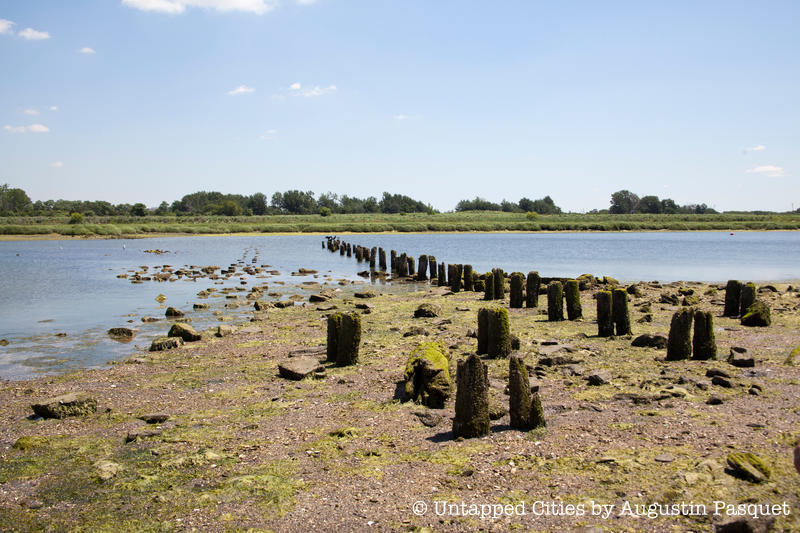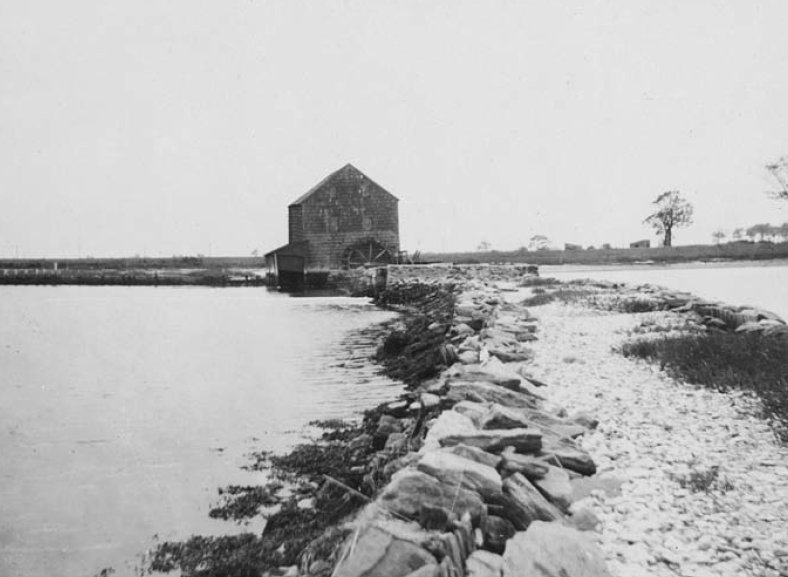7. Remnants of the Gerritsen Grist Mill

Gerritsen Creek gets its name from the Gerritsen family, early Dutch settlers who inhabited this area of Brooklyn for three centuries. This creek was also the original port of entry for the Dutch and an important trading dock for south Brooklyn. In the mid-1600s, Hugh Gerritsen built a grist mill upon this creek, the first tide-powered mill in North America, according to the New York City Department of Parks and Recreation. The mill ground flour, corn, and grains for the troops in General George Washington’s army in the American Revolutionary War when they were stationed in Brooklyn.
It was later captured and used by Hessian soldiers, contracted military from present-day Germany that fought for the British. The Gerritsen grist mill operated until 1889 and the Gerritsen family property was sold to Gilded Age tycoon William C. Whitney in 1899, who built a country estate where he could train his race horses. He donated the property to the city before his death in 1904, and in 1928, the Whitney estate announced that they would restore the mill.
 Gerritsen mill in 1922, looking west from tidal dam. Eugene L. Armbruster Photograph Collection, PR81, Department of Prints, Photographs, and Architectural Collections, New-York Historical Society.
Gerritsen mill in 1922, looking west from tidal dam. Eugene L. Armbruster Photograph Collection, PR81, Department of Prints, Photographs, and Architectural Collections, New-York Historical Society.
Historian Tom Whitford has called the mill, “an absolute marvel” and quite advanced technologically, able to operate continuously even with the ocean tides. Whiteford says the mill was also used as a place for social gatherings – ice skating in winter on the mill pond, picnics in summer – and a place for oystering.
By 1930, the Brooklyn Daily Eagle was noting that “hoodlums and vandals [had] done considerable damage to the Whitney mill and dam property.” In 1931, the community was expressing concern for to its “neglected condition.” The Brooklyn Daily Eagle reported that only one side of the house was intact, with an observer saying the other sides were “looking like the battle front in France.” “Haste is vital in Restoring of Gerritsen Mill,” the headline proclaimed. By 1932, some work was underway to repair the walls and foundations. Additional funds were appropriated in 1934 for a full restoration.
But in 1935, after the exterior renovation was completed, the house was burned down possibly by an arsonist. In low tide, however, you can still see the remnants of the dam and the foundations of the mill.
To get to this spot, start at the Salt Marsh Nature Center and take the nature trail that runs parallel to Burnett Street. The pilings from the mill can only be seen at very low tide.





